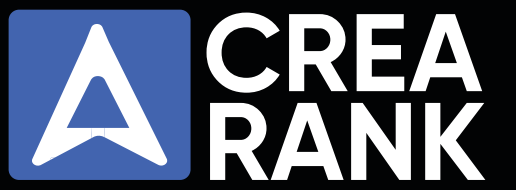Exploring Digital Advertising Technology: Your Gateway to Online Advertising Success
Harnessing the power of online advertising is paramount for driving conversions and boosting revenue for your business. However, to effectively leverage paid online ads, gaining a solid understanding of digital advertising technology is essential.
Digital advertising technology forms the foundation of your advertising endeavors. Referred to as ad tech, it encompasses a range of programs and platforms integral to paid online advertising. Rather than merely a collection of tools, tech represents a comprehensive ecosystem of interconnected components.
You engage with digital advertising technology every time you initiate a digital advertising campaign. It streamlines the entire process, from creating ads to their publication. Let’s delve into ad tech below for a deeper understanding of this process.
Advertisers and publishers
Ultimately, all the components of online advertising technology are designed to facilitate the interaction between the two primary entities: advertisers and publishers. Continue reading to understand the roles of each!
The advertiser
In digital advertising, the advertiser is, as the name suggests, the individual or entity seeking to promote themselves. Whenever you encounter a paid advertisement online, the advertiser is typically the business offering the products or services featured in the ad.
If you’re here to manage your own paid advertising campaigns, you fall into the advertiser category. You’re responsible for creating and utilizing the ads to drive users to your website. However, you’ll need to collaborate with a publisher to showcase these ads.
The publisher
The publisher is the entity that provides the platform for advertisers to display their ads. If you intend to execute a paid advertising campaign, you’ll need to engage with a publisher in some capacity. While Google is a prevalent publisher, other ad networks are also available for marketing purposes.
Programmatic ad buying
In the past, advertisers and publishers negotiated deals directly through direct communication. However, with the emergence of digital advertising technology, this dynamic has shifted. Today, programmatic ad buying is the primary method through which these two entities engage.
There are two primary forms of programmatic ad buying: programmatic direct and real-time bidding (RTB). Let’s explore each of these in detail:
Programmatic direct
Programmatic direct initially resembles traditional methods of acquiring ad space. Initially, advertisers and publishers directly establish a fixed price for the ad space, typically denoted as cost per mille (CPM), representing the average cost of 1000 ad impressions.
Once the price is agreed upon, the programmatic aspect automatically initiates and manages new ads based on the initial agreement.
Real-time bidding (RTB)
Real-time bidding (RTB) is significantly more prevalent and offers a more automated approach compared to programmatic direct. With RTB, advertisers bid on ad inventory through an ad exchange (which we’ll explore shortly).
The ad exchange autonomously allocates ad space based on the bids received, enabling publishers to sell their ad space without direct involvement. Additionally, the price fluctuates across publishers based on the demand for their ad space.
The ad tech ecosystem
Digital advertising technology encompasses more than just tools; it constitutes an interconnected network of entities that collaborate to facilitate advertising. These entities include platforms, ad tech software, and companies playing vital roles in the ad tech landscape. Below, we’ll explore some key entities and their interactions within the online advertising technology system:
Demand-side platforms (DSP)
A fundamental component of online advertising technology is the demand-side platform (DSP), tailored specifically for advertisers. DSPs serve as the entry point for advertisers into the broader ad tech system. Advertisers can define their budget, ad preferences, target audiences, and ad frequency within a DSP. DSPs then engage with other ad tech entities to streamline the purchase process.
Supply-side platforms (SSP)
Unlike DSPs, supply-side platforms (SSPs) cater to publishers, offering them access to the ad tech ecosystem. Publishers utilize SSPs to configure the details of their ad space, including setting price floors and specifying which advertisers can purchase ad space on their platforms.
Ad exchanges
Ad exchanges are intermediaries between DSPs and SSPs, facilitating transactions between advertisers and publishers. Utilizing programmatic ad buying, particularly real-time bidding, ad exchanges match up publishers and advertisers and promote the sale of ad inventory. Some ad exchanges are integrated directly into SSPs, streamlining the interaction between DSPs and SSPs.
Ad networks
While ad exchanges facilitate automated transactions, ad networks function differently. Ad networks are companies that facilitate transactions for premium ad space. Unlike ad exchanges, ad networks operate through manual agreements rather than real-time bidding. They bundle high-quality ad inventory for publishers to sell to advertisers, with pricing typically determined by publishers.
Ad servers
Ad servers are responsible for delivering ads, transferring them from advertisers to publishers and displaying them on publisher websites. There are two main types of ad servers: first-party and third-party. First-party servers are used by publishers to set up ads on their websites, while third-party servers facilitate the transfer of ads from advertisers to publishers.
Advertising agencies
Advertising agencies are third-party organizations that assist advertisers in managing the advertising process. These agencies offer comprehensive services, from ad design to audience targeting and bidding strategy optimization. Partnering with a full-service agency like CreaRank can provide expert guidance and support across all aspects of digital advertising technology.
Agency trading desks (ATDs)
Some advertising agencies offer agency trading desk (ATD) services, focusing specifically on programmatic ad buying. ATDs help businesses optimize their DSPs and bidding strategies to secure optimal ad placements at the lowest cost. Collaborating with an agency with ATD capabilities can enhance the effectiveness of real-time bidding strategies.

